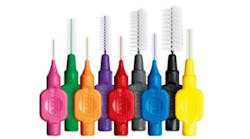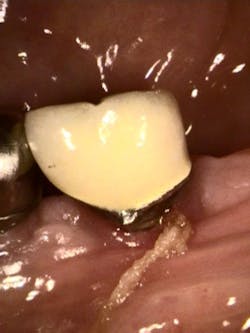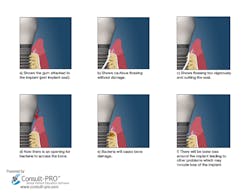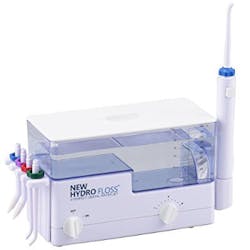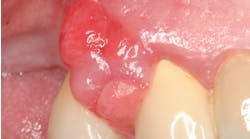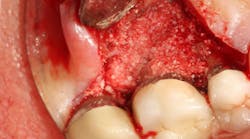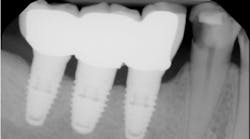Top 3 reasons why you shouldn't use floss around dental implants
Dental implants are changing people’s lives and improving overall health. However, while they are designed to look, feel, and function like natural teeth, implants have anatomical differences that may require a bit more care than a traditional toothbrush and dental floss to ensure that surrounding gum tissue and bone remain healthy. Shavonne R. Healy, BSDH, RDH, ICP, discusses a few reasons why flossing may not be the ideal choice for implant patients.
A DENTAL IMPLANT is a medical device that is placed within the jaw. Dental implants are designed to look, feel, and function like natural teeth. These characteristics may explain why both dental professionals and patients alike are often "cleaning" them as they would natural teeth. One commonly prescribed home-care recommendation is to use dental floss at least once a day in a "shoeshine" motion around the implants. Although floss is believed to prevent disease around natural teeth, the opposite may be true for the tissue surrounding implants. Here are the top three reasons why flossing may not be ideal for the patient who has dental implants.
No. 1: Floss shreds
One contraindication acknowledged by many dental hygiene experts is the potential for floss to shred and get stuck between the gingiva and the implant. Floss particles that have been left behind due to shredding have been linked to cases of peri-implantitis (1) (figure 1).
No. 2: Flossing is technique sensitive
Natural teeth attach to the bone by periodontal ligaments. These ligaments surround the tooth and act as a protective barrier against invading bacteria. Dental implants lack a self-limiting process that exists in the tissues around natural teeth. Instead of being attached to the implant, the surrounding tissue creates a protective seal that can be easily broken with aggressive flossing (2,3) (figure 2). If dental professionals recommend flossing for at-home maintenance, this should be accompanied by instructions that include a hands-on demonstration to ensure a safe and effective technique.
Figure 2: Aggressive flossing can break through the protective seal of the surrounding tissue around the dental implant, allowing bacteria to access the bone and cause damage leading to loss of the implant.
No. 3: The feel of a larger space
Dental floss is most beneficial when used as a preventive tool to mechanically remove bacteria from the tooth surface and the tight space between the gingiva surrounding the teeth. Depending on the design of the restoration, spaces between dental implants may present in a variety of shapes, sizes, and depths. (3) For this reason, home-care recommendations need to be customized to ensure that patients are using the device best suited for the size of the space. Interdental brushes have become the new standard of care for keeping the spaces in between dental implants free of food and plaque (figure 3). Oral irrigation has also been included in the implant-care plan for complex cases and for patients with dexterity issues (figure 4).
Figure 3: TePe Oral Health Care interdental brushes
Figure 4: Hydro Floss oral irrigator from Oral Care Technologies
Tooth loss can be debilitating to the overall health of the body. Dental implants are changing people’s lives and improving overall health. However, traditional standards recommended by dental professionals for at-home maintenance may not be appropriate for the patient with dental implants. Regardless, dental hygiene professional and home-care recommendations need to be customized to meet the individual needs of the patient and, therefore, may require more than the traditional toothbrush and dental floss. (1,2)
References
1. van Velzen FJ, Lang NP, Schulten EA, Ten Bruggenkate CM. Dental floss as a possible risk for the development of peri-implant disease: an observational study of 10 cases. Clin Oral Implants Res. 2016;27(5):618-621. doi:10.1111/clr.12650.
2. Roncati M. Nonsurgical periodontal therapy: indications, limits, and clinical protocols with the adjunctive use of a diode laser. Milan: Italy: Quintessenza Edition; 2017.
3. Beumer J III, Faulkner RF, Shah KC, Moy PK. Fundamentals of Implant Dentistry: Prosthodontic Principles. Hanover Park, IL: Quintessence Publishing; 2015.
